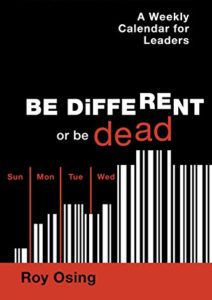Setting sales quotas is not pure science; rather it is a healthy blend of both employing standard analytical tools and imposing the broader needs of the company.
These are 5 deadly traps organizations fall into when setting sales quotas.
1. Applying a bottoms up approach; setting individual rep quotas and summing them to determine the total sales target.
This is an inherent conflict in every organization between what the organization’s overall revenue growth NEEDS are – usually a stretch- and what sales reps are prepared to commit to – usually conservative.
Sales quotas should be driven by company growth goals not by what the reps think they can reasonably achieve, otherwise the reps could make their bonus but the organization could miss its revenue target.
A great quota system requires Sales to do the organization’s bidding, not their own.
2. Not reserving a certain amount of quota for competitive win backs – clients who went to a competitor.
Quotas should reserve a specific category for “the unfaithful” who have left. Win back objectives, however, should not overshadow the need to grow the existing account base.
3. Including more than organic volume growth in quotas. Some quota systems allow sales to take credit for sales revenue growth from factors such as increasing price and taking on a new customer base through a merger or acquisition.
This contaminates the view of sales effectiveness. The quota system should be about growing the existing business through organic volume and nothing more.
4. Applying the same sales approach to every customer and assuming that each will respond the same way in terms of buying behavior.
They won’t.
Each client responds in their own unique way, and quotas must be set accordingly.
Some might make quick decisions to buy; others may require a longer selling cycle. Some might be okay with buying individual products; others might require tailored solutions.
The point is to decide on the appropriate sales method for each customer, understand how they will likely respond and THEN evaluate the quota potential for each.
5. Not understanding client potential to be able to determine the smallest client list possible that will deliver the assigned quota.
Time and energy available are scarce; sales nirvana is to achieve quota from as few customers as possible rather than “spray” their effort over a broad base of customers hoping the hit rate will produce the assigned quota.
Sales performance plans must include the objective of understanding customer potential and how it has been used in developing quotas.
Exceptional quota systems are not built overnight; they evolve from learning what works and what doesn’t.
Avoid these 5 errors and inch your way to a quota system that delivers consistent results.
Pipeliner CRM empowers sales teams to make quotas. Get your free trial of Pipeliner CRM now.


















Comments